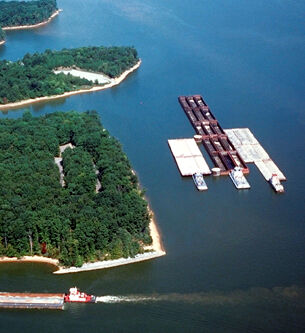The United States is blessed with the most extensive developed inland waterway system in the world, well positioned to drain the largest chunk of the most fertile farmland in the world. But that does not mean the U.S. lacks serious competition from other waterway systems overseas, or that we can ever be complacent about the transportation advantage that keeps U.S. farm products and bulk exports competitive in world markets.
A recently released study by the National Waterways Foundation titled “Waterborne Competitiveness U.S. and Foreign Investments in Inland Waterways” compares the U.S. waterways system with several important overseas competitors from the viewpoints of economic development and national security.
It singles out the rapidly developing Amazon River and the Hydrovia Parana-Paraguay river systems in South America; the Yangtze River system in China, the world’s business waterway and a linchpin in the Chinese government’s development strategy, along with the Mekong River; and Europe’s Rhine and Danube river systems for sustained attention.
All three overseas waterways systems have lessons to teach, the report concludes.
The HPP and Amazon systems in South America are the focus of development by both the Chinese and private American companies. The Amazon River in particular, since it is naturally deep and wide enough to handle ocean-going vessels up part of its length, is seeing rapid development. Both river systems have tremendous potential that is hampered by the failure of governments sharing jurisdiction (especially on the HPP system) to cooperate on joint regulation and governance. The U.S. is fortunate that the Mississippi River system lies fully without its borders and that federal jurisdiction over U.S. waterways is firmly established. But if and when South American countries learn to cooperate more on river issues, they could quickly make a lot of improvements that would erode U.S. transport competitiveness.
The Rhine-Danube system has invested heavily in container-on-barge systems, thanks to the sustained commitments of Europe’s green parties. “Europe’s ability to move significant high-value cargo on the Rhine River is the result of a targeted policy strategy where that was the end goal. The region coordinated investments to improve operational reliability and connections to other modes, and the traffic followed.”
The U.S. container policy doesn’t have to exactly mirror the EU, the report suggests, but it does need “an intentional, coordinated, and fully executed strategy” on container cargo that includes waterways and has a defined end-goal. Europe’s waterways systems are a model rather than a threat, the report concludes.
Besides investing in South America, China is enhancing the Yangtze River system—the world’s most heavily trafficked waterway—and connecting it to rail systems that directly connect to Europe.
One of the report’s messages is that because China, the European Union and Columbia are also investing significant resources to upgrade their inland river networks, recent funding wins for U.S. improvements—welcome as they are—are barely keeping pace. In directing the port and waterway investments of the Infrastructure Investment and Jobs Act, the report suggests, planners would do well to keep an eye on overseas developments and to ensure that infrastructure investment doesn’t only catch up with past underinvestment but ensures competitiveness in a future where our peers and trade competitors are fully aware of the advantages of rivers and waterways.
David Murray can be reached at [email protected].



